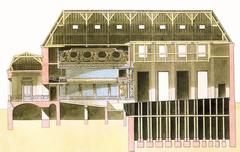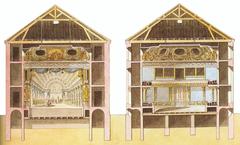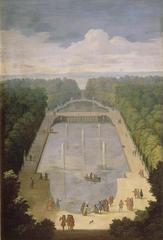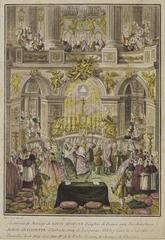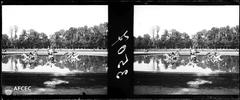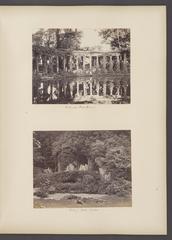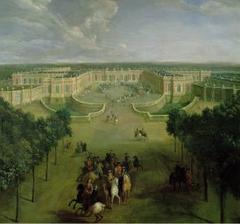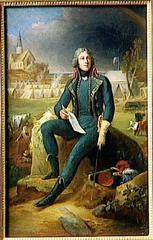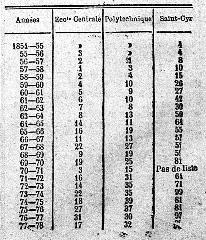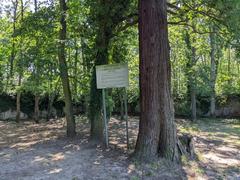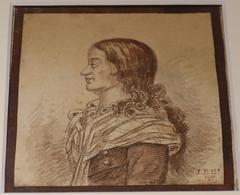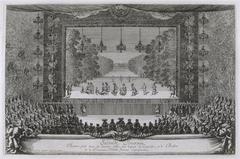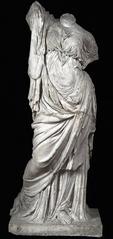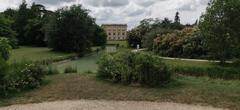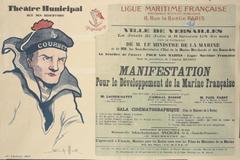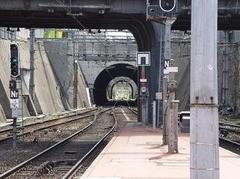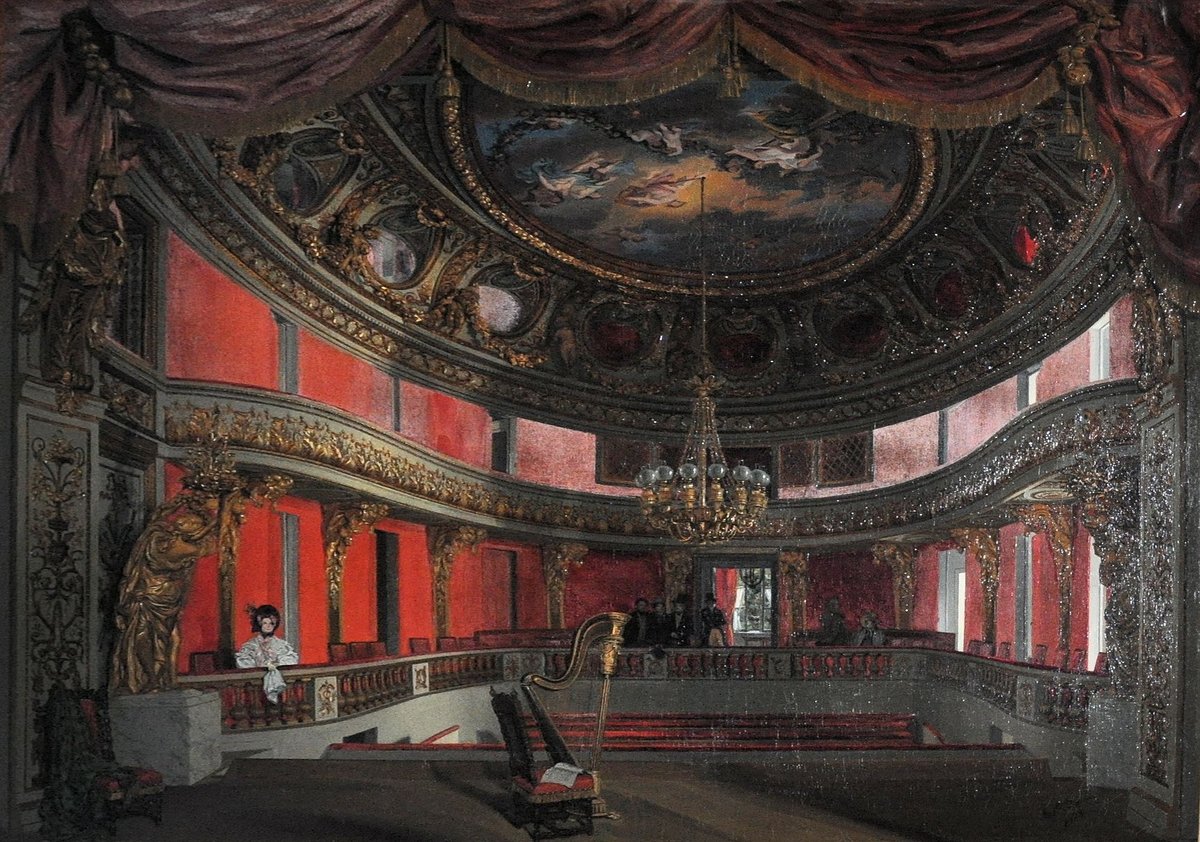
Théâtre De La Reine Visiting Hours, Tickets, and Guide to Versailles Historical Sites
Date: 15/06/2025
Introduction
Set within the tranquil gardens of the Petit Trianon at the Palace of Versailles, the Théâtre de la Reine (Queen’s Theatre) stands as one of the most intimate and enchanting relics of 18th-century France. Unlike the grand public theaters of its era, this neoclassical gem was conceived as a private retreat for Queen Marie Antoinette—a place where she and her closest confidants could escape the formalities of court life and indulge in the performing arts.
Commissioned in 1778 and completed by architect Richard Mique in 1780, the theater is celebrated for its remarkable preservation, original stage machinery, and refined artistic décor. Today, the Théâtre de la Reine provides visitors with a rare, immersive window into royal artistic life, Enlightenment ideals, and the personal world of France’s last queen (Château de Versailles; Paris ZigZag).
This guide explores the history, architecture, cultural significance, and practical visitor information—including up-to-date visiting hours, ticketing details, accessibility, and travel advice—to help you make the most of your visit to one of France’s most exceptional historical theaters.
Table of Contents
- Historical Background
- Architectural and Artistic Features
- Visiting the Théâtre de la Reine
- Frequently Asked Questions (FAQ)
- Conclusion
- References
Historical Background
Origins and Royal Patronage
The Théâtre de la Reine was commissioned by Queen Marie Antoinette as part of her private Petit Trianon retreat within the Versailles estate. Seeking a sanctuary from the rigid etiquette of the main court, the queen envisioned a space dedicated to theatrical and musical performances shared only with her closest friends. The theater, completed in 1780 under architect Richard Mique, became a centerpiece of this exclusive world (uw.pressbooks.pub).
Architectural Features and Innovations
While modest in size—seating approximately 200–250 guests—the theater was a marvel of neoclassical design and technical innovation. Its exterior features a classical portico that integrates seamlessly with the gardens. Inside, the auditorium is adorned with blue, white, and gold hues, faux-marble finishes, and gilded details. The use of papier-mâché for intricate interior decoration exemplified both artistic ingenuity and cost efficiency (Paris ZigZag; Pariscrea).
The original stage machinery, designed by Pierre Boullet and inspired by innovations at the Royal Opera House, remains operational. This sophisticated system, with its rails and pulleys, allowed quick scene changes and theatrical special effects—a technological feat for its time (Tatler).
Cultural and Social Significance
Marie Antoinette’s passion for theater was reflected in her frequent participation as both actress and director. The repertoire included contemporary plays and operas by Beaumarchais, Gluck, and Rousseau, often performed in a “théâtre de société” setting—intimate, amateur productions by the Queen and her inner circle. The theater thus became a haven for artistic freedom and Enlightenment ideals, fostering creativity and camaraderie away from public scrutiny (Wikipedia FR).
Survival and Restoration
Remarkably, the Théâtre de la Reine survived the French Revolution largely unscathed, likely owing to its discreet location and limited notoriety. Through the 19th and 20th centuries, it remained a privileged space for royal and imperial visitors, including Empress Eugénie. Designated a historic monument in 1862 and 1906, and later part of the UNESCO World Heritage Site, the theater has benefited from meticulous restorations—most notably in 2009 and during the 2020–2021 pandemic—ensuring the preservation of both its architecture and stage technology (Vanity Fair).
Legacy and Modern Relevance
Today, the Théâtre de la Reine stands as the only fully functional 18th-century theater in France with original stage machinery. Its limited, carefully managed use preserves its authentic atmosphere, and it continues to inspire scholars, artists, and visitors as a testament to Marie Antoinette’s artistic legacy and the craftsmanship of the Ancien Régime (Château de Versailles).
Architectural and Artistic Features
Italianate Influence and Intimate Scale
The theater’s design draws on Italian influences, with a horseshoe-shaped auditorium, richly decorated loges, and a focus on intimacy over ostentation. Its discreet entrance, nestled in the gardens, underscores its role as a private escape (Pariscrea).
Stage and Technical Marvels
The stage, featuring eight planes and a gentle slope, was designed for optimal visibility and acoustics. The orchestra pit accommodates up to 15 musicians, suitable for chamber music and operas favored by the Queen. The original wooden machinery—still in operation—enables rapid scene changes and special effects, demonstrating the technical sophistication of the period (Paris ZigZag).
Materials, Decoration, and Ambiance
Despite its sumptuous appearance, the theater was constructed using practical materials: faux marbles from painted wood and plaster, and stage sets from papier-mâché and cardboard. Inside, gilded moldings, delicate fabrics, and a palette of pale blue, gold, and cream evoke a fairy-tale ambiance, immersing visitors in the refined world of Marie Antoinette (Pariscrea; Tatler).
Restoration and Preservation
The theater’s survival is attributed to its modest materials and secluded setting. Restoration efforts have focused on authenticity, from hand-stitched curtains to conservation of the original stage sets—some of which are the oldest surviving in the world. The theater is now a living museum of Enlightenment-era theatrical art (Vanity Fair).
Visiting the Théâtre de la Reine
Visiting Hours
- Seasonal Access: The theater is open to the public via guided tours, typically from April through October.
- Opening Times: Standard hours for the Petit Trianon estate are 12:00 PM to 6:30 PM (last admission at 5:30 PM), closed Mondays. Exact tour times for the theater vary; always check the official Château de Versailles website before your visit.
Ticket Information
- Tickets: Entry to the theater is included with the Versailles Passport ticket, which grants access to the Petit Trianon, Grand Trianon, and main palace. Guided tours of the theater require advance booking.
- Pricing: Adult combined tickets range from €20–€30; discounts available for EU residents under 26, children, and seniors.
- Advance Booking: Highly recommended due to limited capacity and the theater’s fragility (Pariscrea).
Accessibility
- Physical Access: Due to historic architecture, some areas may be challenging for visitors with mobility impairments. Wheelchairs are available at the main palace and Grand Trianon; accessible routes lead to the estate, but theater access remains limited. Contact Versailles visitor services in advance for assistance (Talk Travel App).
Travel Tips and Nearby Attractions
- Getting There: The theater is within the Petit Trianon gardens, about a 30-minute walk from the palace. Estate shuttles, bike rentals, or electric vehicles are available.
- Nearby Sites: Combine your visit with the Petit Trianon, Queen’s Hamlet, and Grand Trianon for a full experience.
- Best Times: Weekdays and early afternoons in spring or early autumn are less crowded (Wandering Why Traveler).
Guided Tours and Special Events
- Guided Access: The theater is accessible only via official guided tours, conducted in multiple languages. Tours include demonstrations of historic stage machinery and explanations of the theater’s history.
- Events: Occasionally, special concerts or performances are held, though these are infrequent to preserve the site (Château de Versailles Spectacles).
Frequently Asked Questions (FAQ)
Q: Can I visit the Théâtre de la Reine without a guided tour?
A: No. To protect the fragile interiors, access is exclusively via official guided tours.
Q: Are tours available in English?
A: Yes, but availability may be limited. Book in advance.
Q: Is photography allowed inside the theater?
A: Policies vary; generally, non-flash photography is permitted during tours. Confirm with your guide.
Q: Is the theater accessible for visitors with reduced mobility?
A: Access is limited; contact Versailles visitor services for specific accommodations and assistance.
Q: How do I book tickets?
A: Tickets can be purchased online via the official Château de Versailles website or at the Versailles ticket office.
Q: Can I attend a performance at the theater?
A: Regular performances are rare due to preservation needs. Special events are announced on the Versailles Spectacles portal.
Conclusion
The Théâtre de la Reine is a singular treasure within the Versailles estate, offering a rare glimpse into the personal and artistic world of Marie Antoinette. Its exquisite neoclassical architecture, original stage machinery, and remarkable preservation make it an essential destination for anyone interested in history, theater, or French culture. By planning your visit in advance and securing a spot on a guided tour, you can experience firsthand the intimacy, innovation, and elegance that defined the Queen’s private court.
Whether you’re exploring the gardens, attending a special event, or simply seeking a unique historical experience, the Théâtre de la Reine provides an unforgettable journey into the heart of Versailles’ cultural legacy.
For the most current information on visiting hours, tickets, and tours, consult the official Château de Versailles website.
References
- Château de Versailles official site
- Paris ZigZag
- Vanity Fair
- Pariscrea
- Tatler
- Wikipedia FR
- Music & Opera
- Château de Versailles Spectacles
- The Tour Guy
- Talk Travel App

